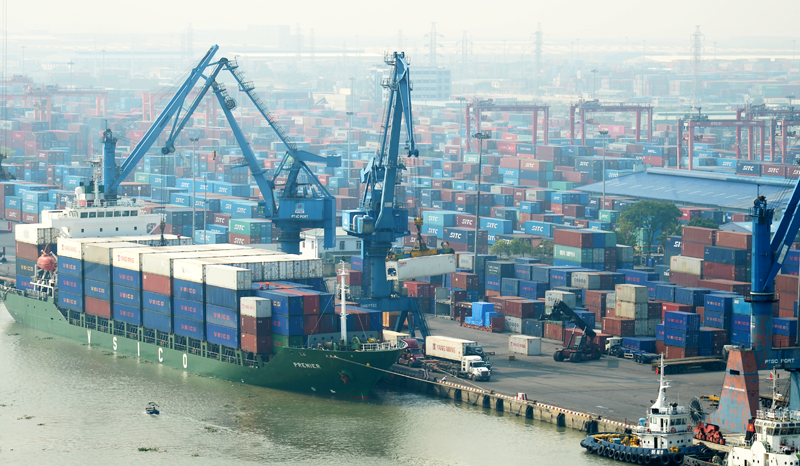Vietnam aims for export growth of 6-7% in 2021-2030
Vietnam aims for a healthy and sustainable trade partnership with all key partners.
Deputy Prime Minister Le Van Thanh has signed off decision No.493 approving the country’s trade strategy until 2030, which targets export growth of 6-7% during the 2021-2030 period.
| Cargo handling at Dinh Vu port, Haiphong. Photo: Pham Hung |
Under the strategy, Vietnam’s exports are expected to expand by 8-9% in 2021-2025, and 5-6% in 2026-2030.
Meanwhile, the imports growth would average 5-6% in 2021-2030, with around 7-8% in the 2021-2025 period, and 4-5% in 2026-2030.
A key priority in the strategy is to ensure a balanced trade in the next five years, and gradually reach a sustainable surplus in the 2026-2030 period.
“Vietnam aims for a healthy and sustainable trade partnership with all key partners,” it said.
In addition, the Government sets as a goal the contribution of the manufacturing and processing sector at 88% of total exports by 2025 and 90% by 2030, of which mid-tech products would account for 65% in 2025 and 70% in 2030.
It is expected the European market to make up 16-17% of Vietnam’s exports by 2025, and 18-19% by 2030; the American market 32-33% by 2025 and 33-34% by 2030; and the Asian region 49-50% by 2025 and 46-47% by 2030.
To ensure sustainable exports, Vietnam would continue to push for industrialization and modernization, focusing on environmentally-friendly export products with higher added value and technological content.
Vietnam is also expected to shift to a high processing level of agro-forestry-fishery products that are capable of meeting quality, environmental and social standards in foreign markets.
The strategy also stressed the necessity to reduce the country’s dependence on input materials from abroad, while moving away from producing items that may cause environmental pollution and are resource-intensive.
For the 2021-2025 period, Vietnam would focus on key farm produce and promote the local brands in international markets, at the same time raising the added value for products with high competitiveness in the labor-intensive industries, such as garments, and footwear or electronics.
In the subsequent five years, the country is set to develop new products of high added value, and take advantage of Industry 4.0 to focus on mid-to high tech products for exports.
The strategy noted Vietnam would prioritize importing modern machinery, equipment, and production chains from developed countries, especially high technologies, which are seen as a key solution to enhance productivity, quality, and competitiveness of export products.
A key approach is to continue diversifying export-import markets to avoid dependence on a single market while ensuring balanced trade relations for sustainability.
Vietnam aims to deepen economic integration through the utilization of free trade agreements that the country is a part of and penetrate key markets such as the EU, Japan, China, South Korea, and ASEAN.












